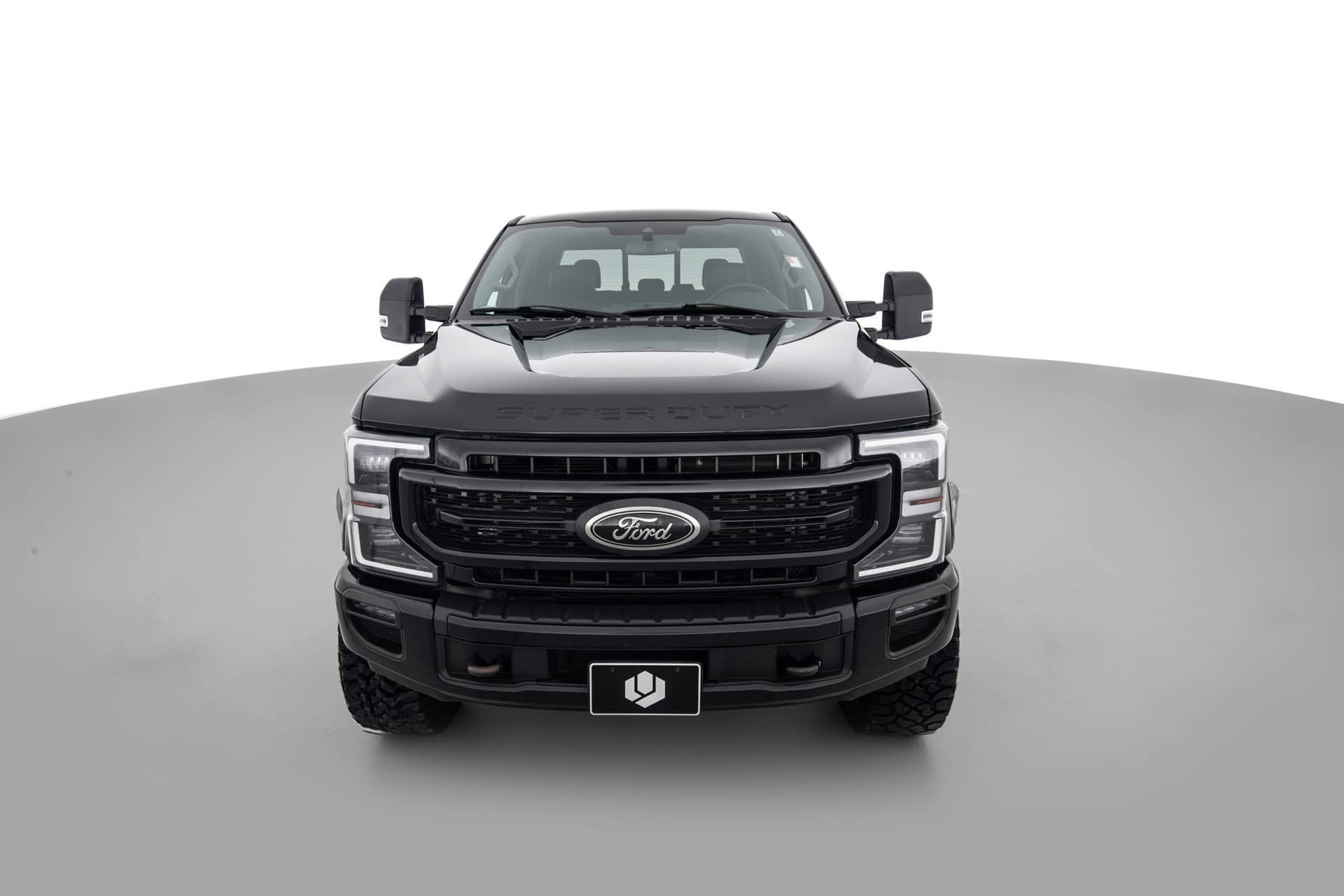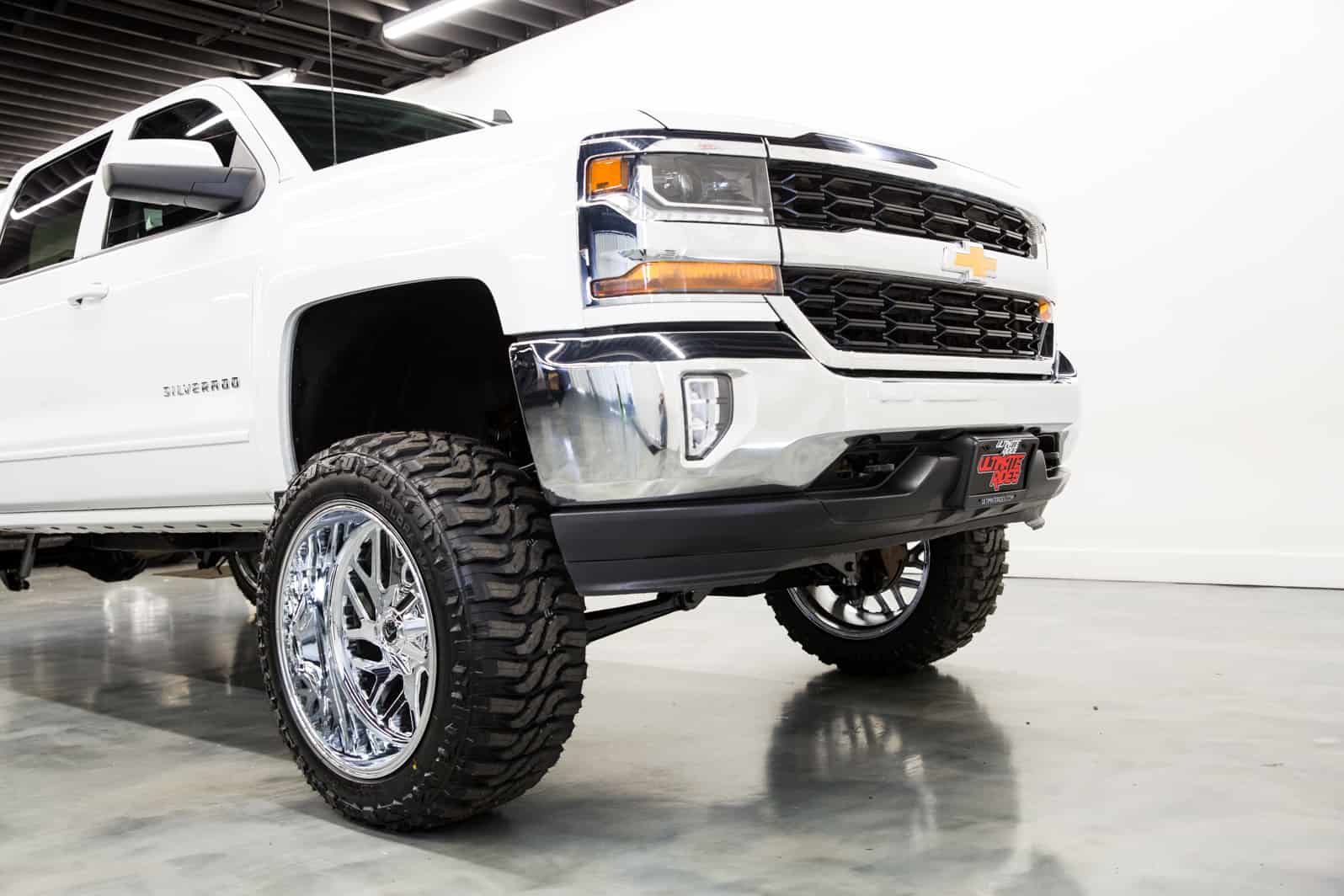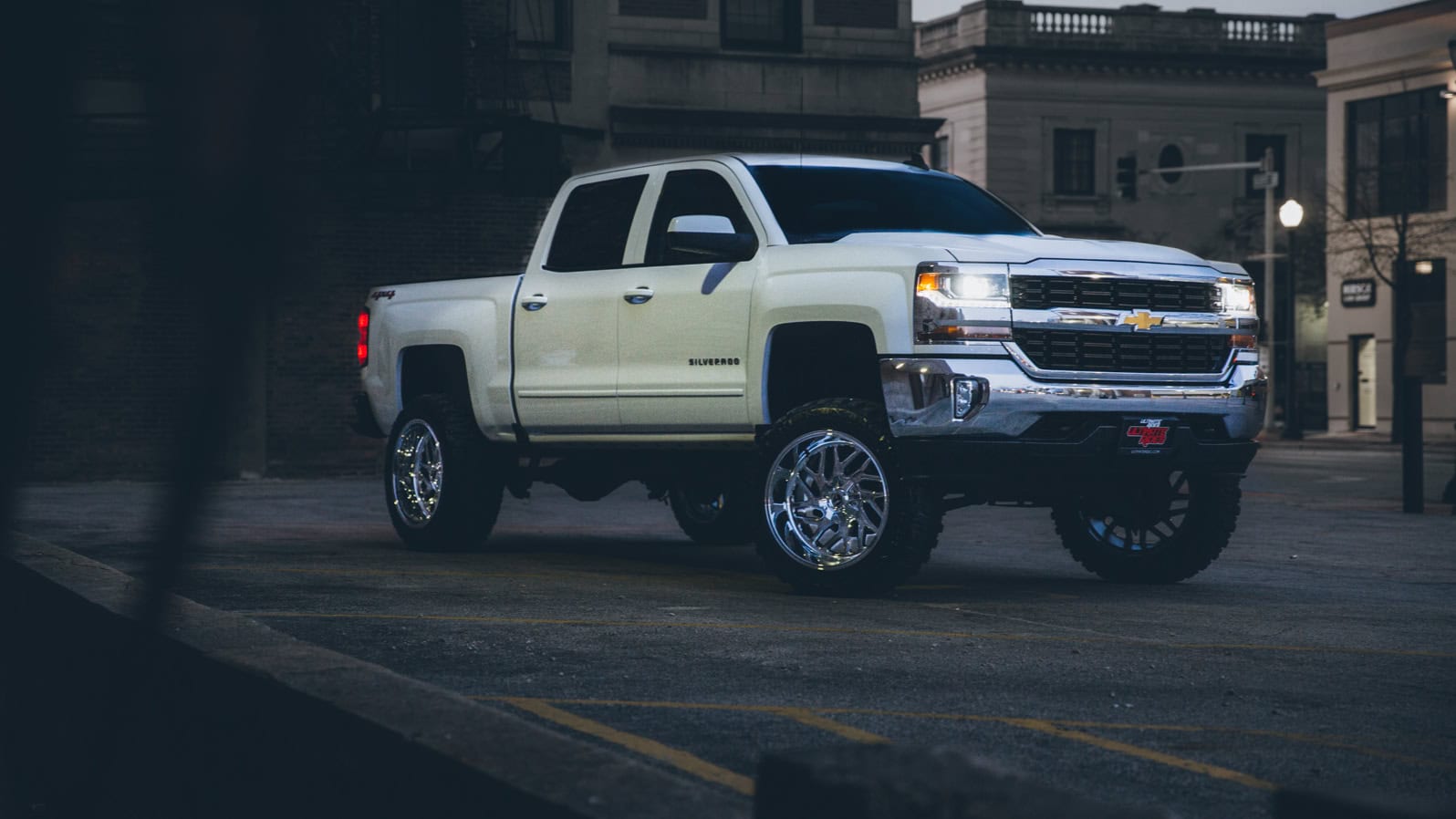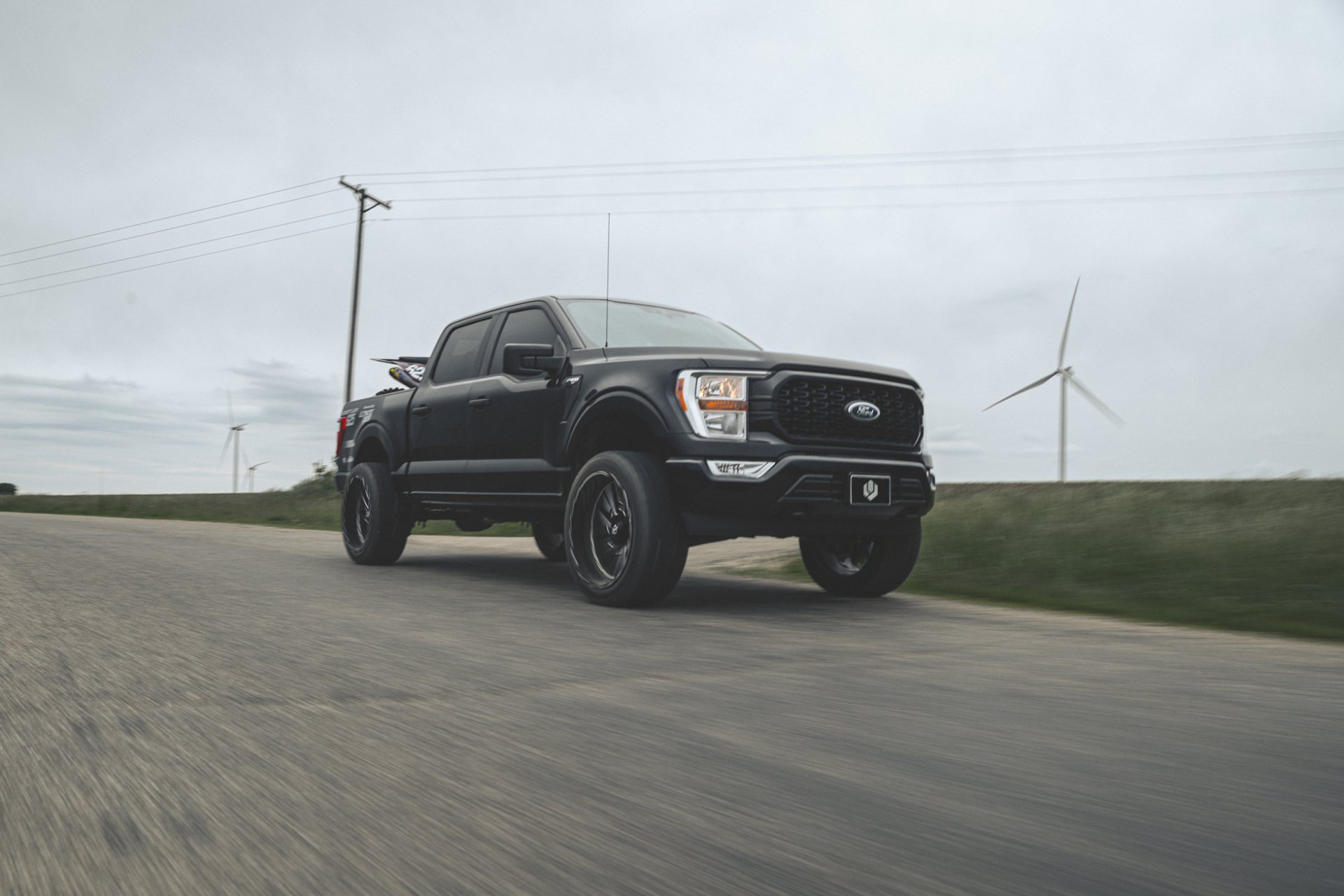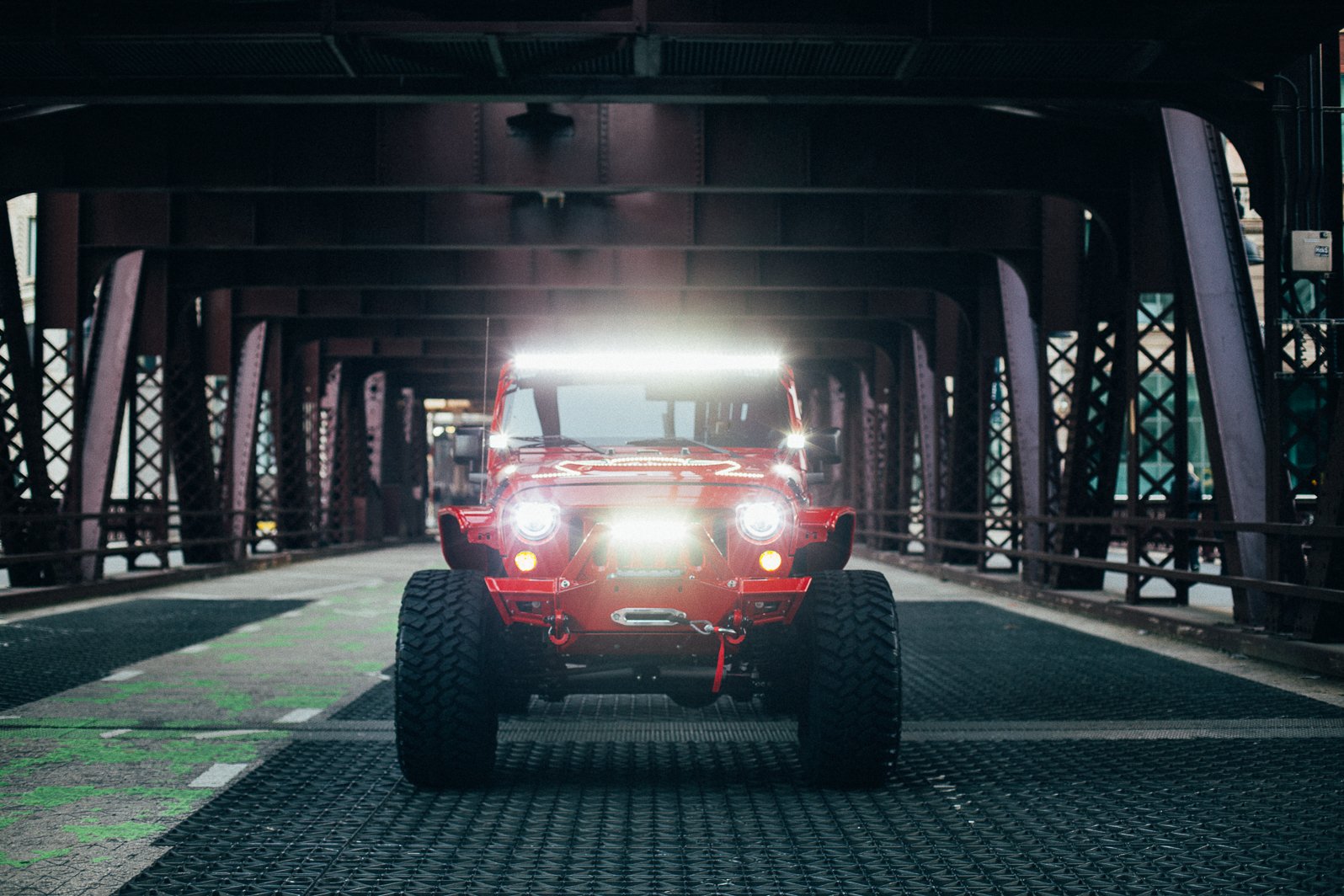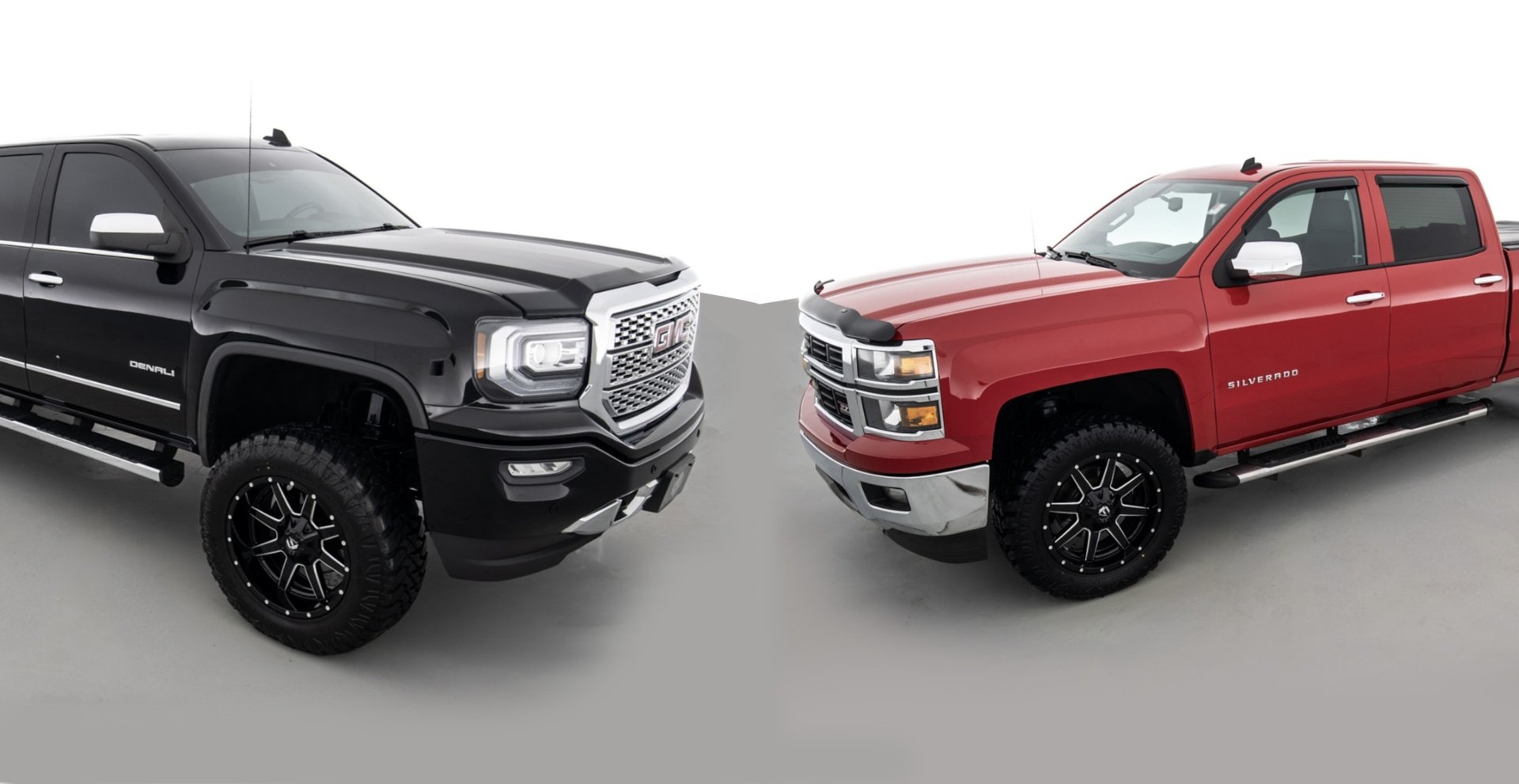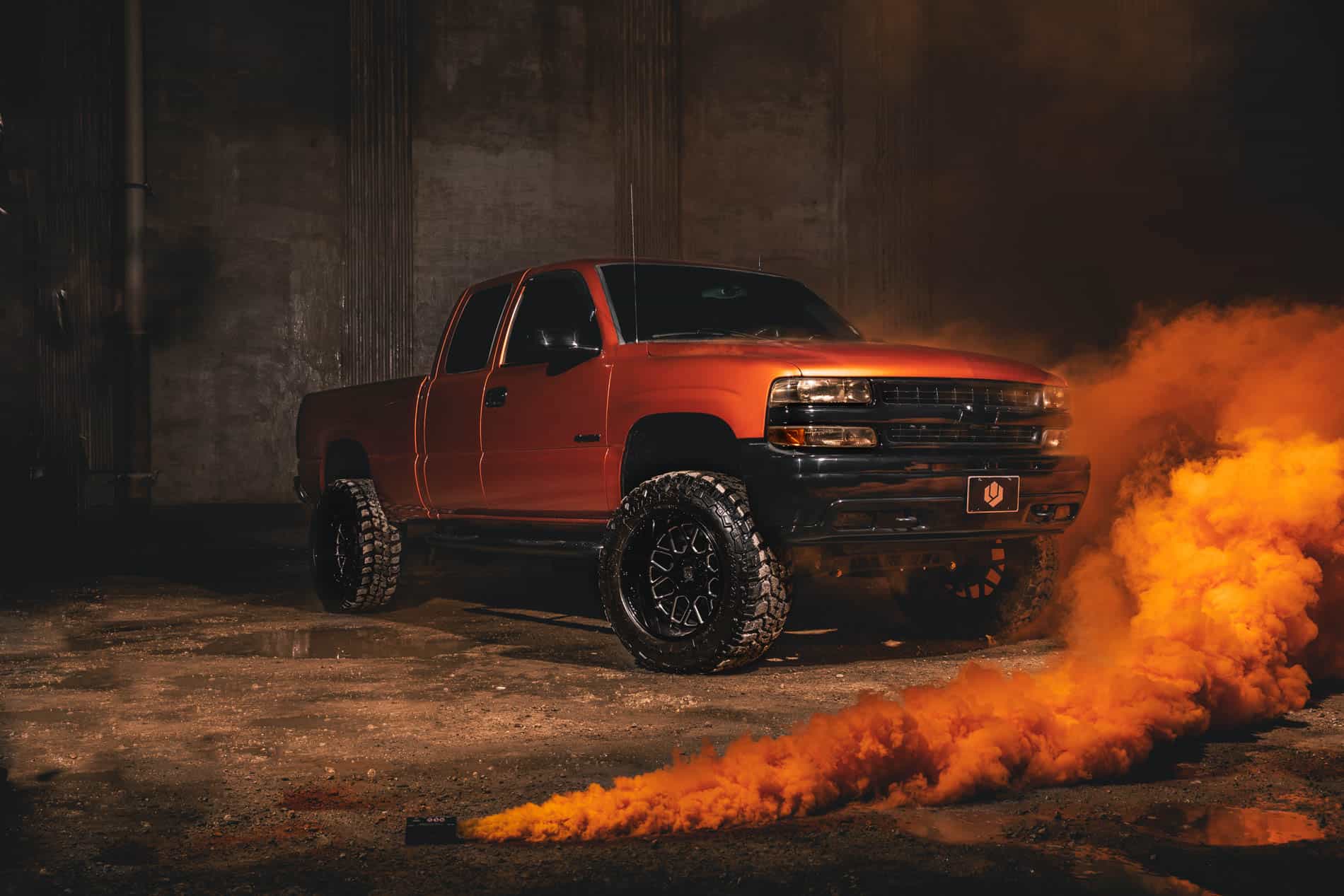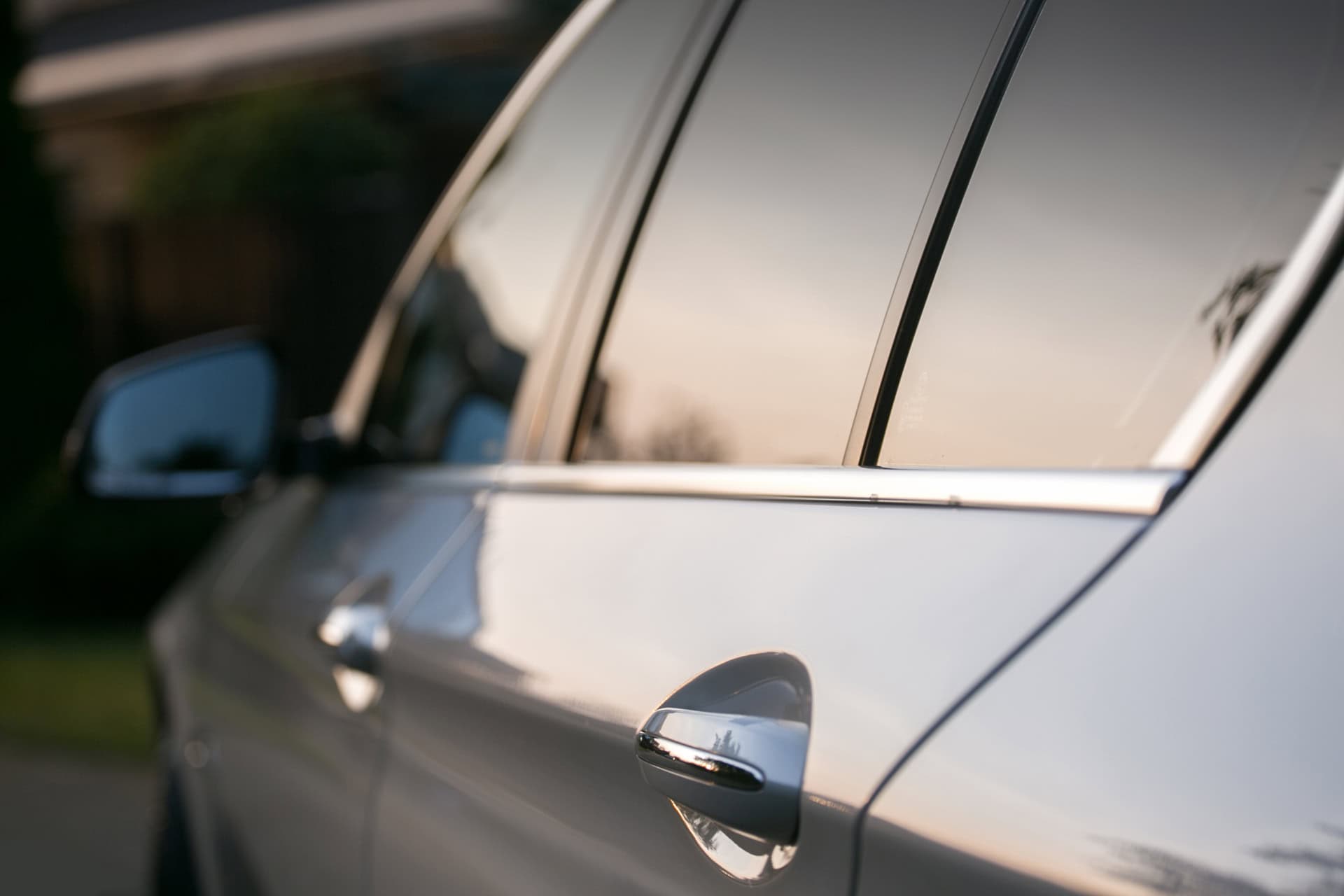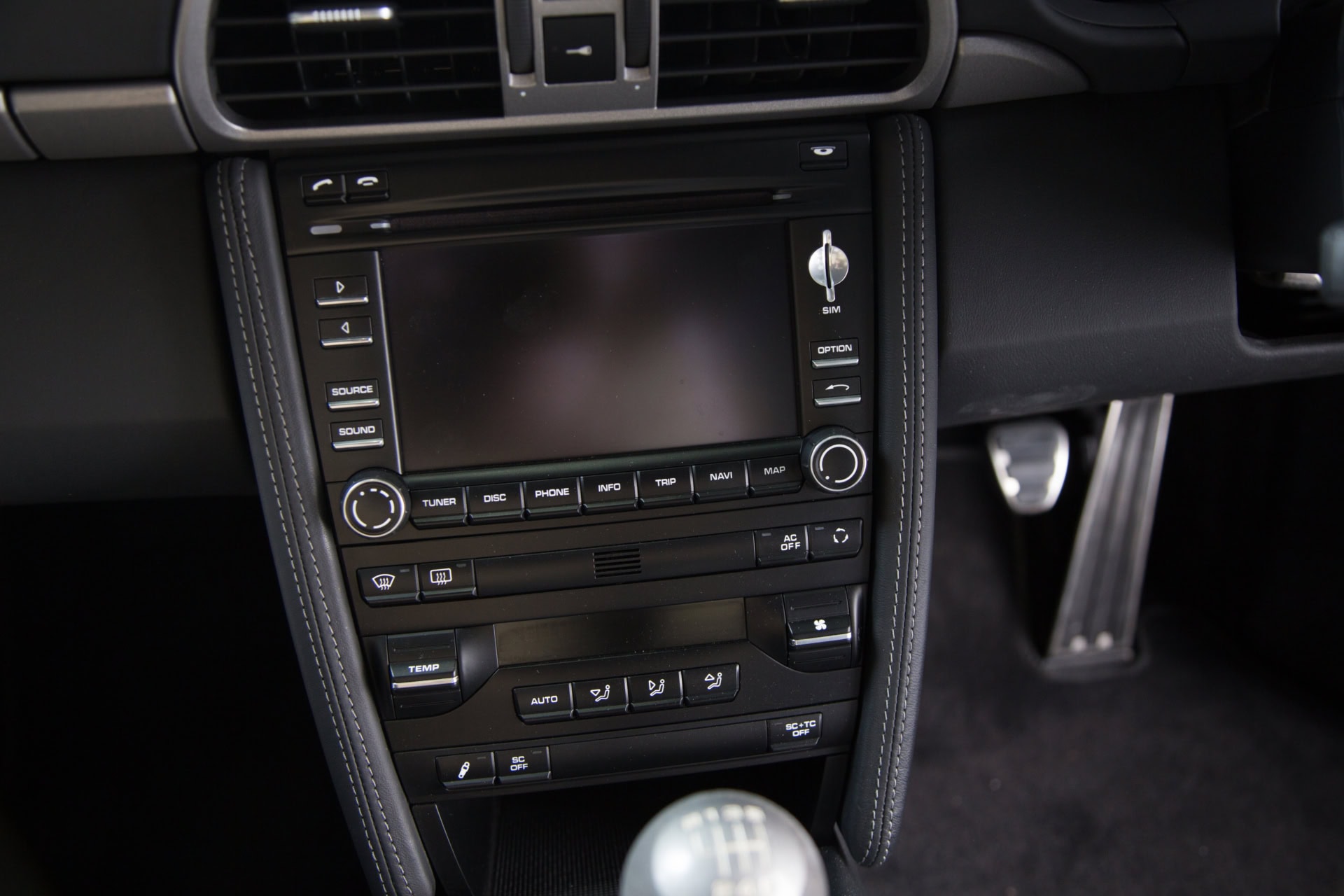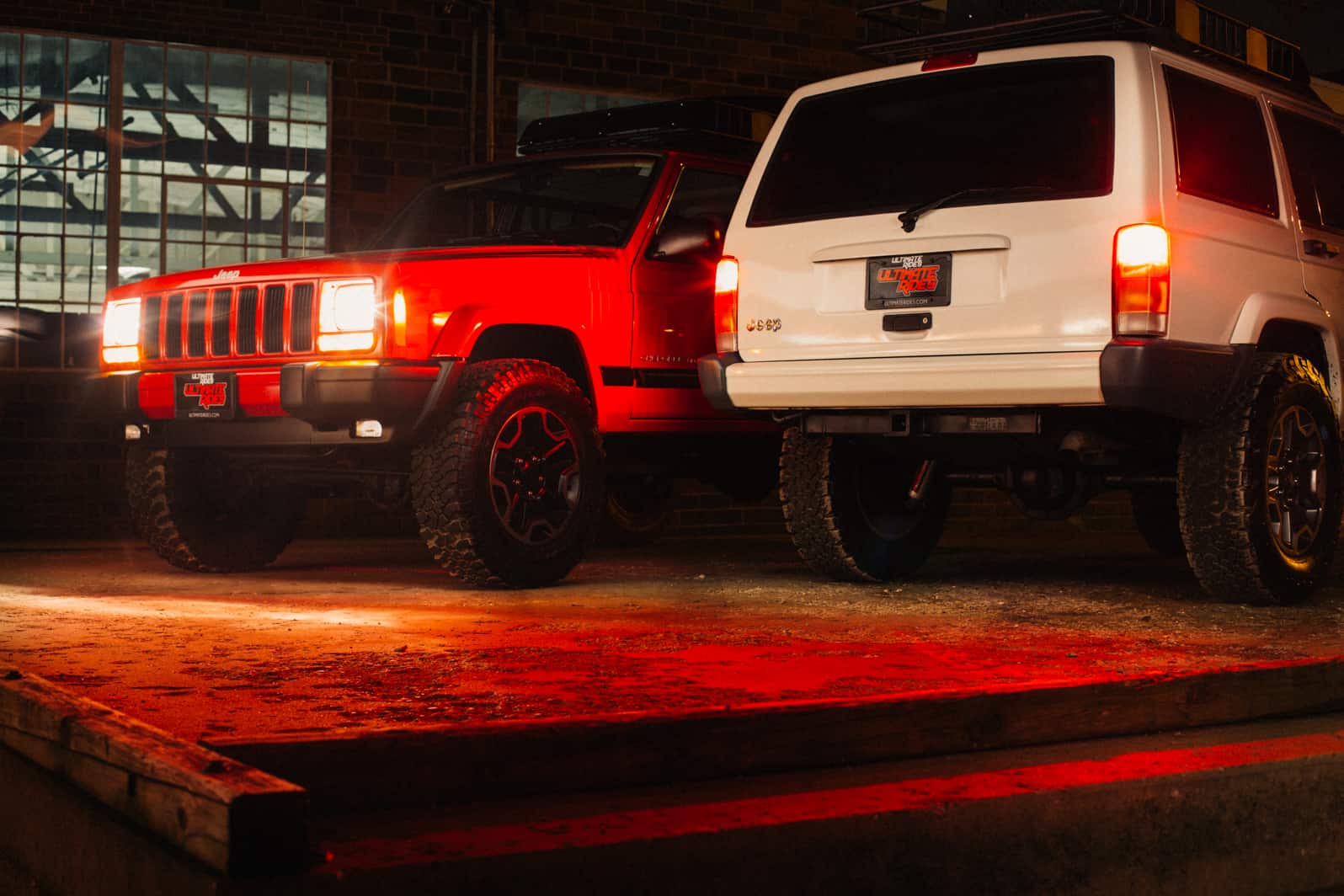If you’ve ever rolled your window down and winced at the sharp squeak echoing from your lifted truck, you’re not alone. You might be wondering, why does my lifted truck squeak so much, especially when I turn or go over a bump?
These sounds can be frustrating and sometimes embarrassing. But more importantly, they can be your truck’s way of saying, “Hey, something needs attention.
When you’re wondering why the front end of your truck is squeaking, whether over speed bumps or even while idling in the driveway, it’s important to understand where that noise is coming from.
In this guide, we’ll explore the most common reasons behind those irritating squeaks, how to stop trucks from squeaking, and whether it’s a quick DIY fix or something worth bringing to a mechanic.
Quick Answer – Most Common Reasons Lifted Trucks Squeak
So, what does it mean when your truck squeaks? Here are the top reasons:
- Dry or worn bushings (especially in the front end)
- Loose or under-torqued suspension components
- Worn-out shocks or struts
- U-joint wear, especially post-lift
- Sway bar links or end links loosening or degrading
Common Squeak Sources and Quick Fixes
| Cause | Sound Location | DIY Fix | Severity |
| Worn bushings | Front corners | Grease or replace | Medium |
| Loose U-bolts | Rear axle | Retorque | Low |
| Bad shocks/struts | Front or rear | Replace | High |
| Faulty U-joints | Driveshaft area | Replace or service | High |
| Loose sway bar links | Front or rear | Tighten or replace | Medium |
Why Lifted Trucks Are More Prone to Squeaking
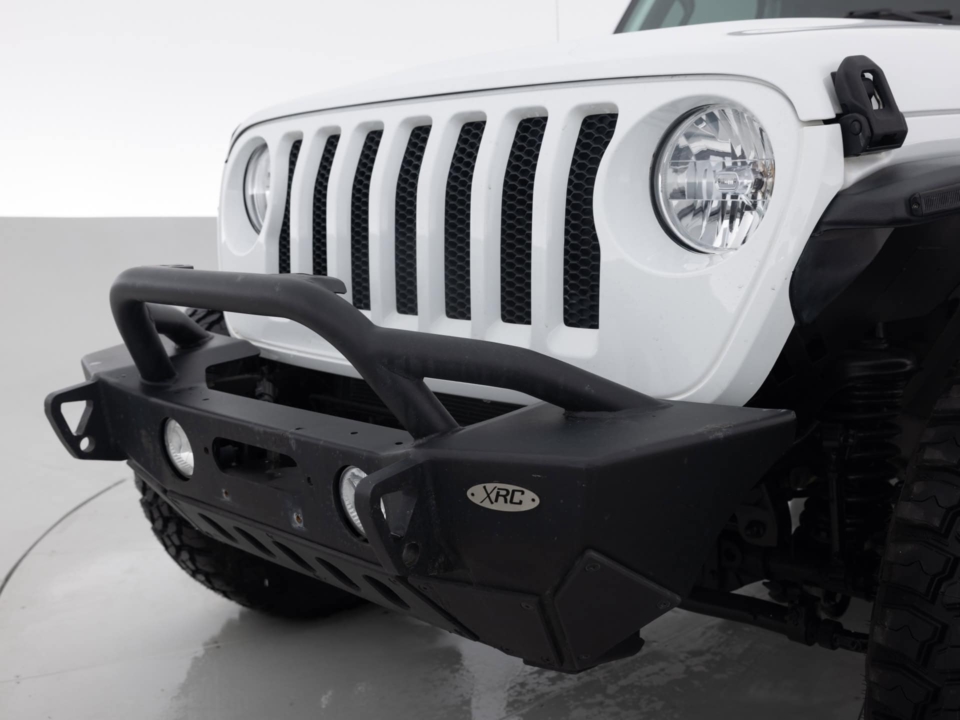
Lifted trucks are undeniably eye-catching and off-road capable, but that added height can put extra strain on the parts underneath. Here’s why lifted trucks squeak more than stock ones:
Suspension Geometry Changes
When you lift your truck, you’re adjusting the entire balance of how the suspension components were originally designed to move. This can cause misalignment or unnatural tension on bushings, joints, and brackets, resulting in squeaks over time.
Aftermarket Lift Kit Quality
Not all lift kits are created equal. Budget-friendly kits might lack the proper engineering or hardware quality, leading to accelerated wear or improper fitment.
Bigger Tires, Bigger Stress
Those oversized tires may look amazing, but they also add more rotational mass and leverage on steering and suspension components. That means parts wear out faster and are more likely to squeak under pressure.
Improper Installations
If the lift wasn’t installed with attention to detail (missing grease, incorrectly torqued bolts, or skipping necessary upgrades), your truck could start singing an unwelcome tune before long.
How to Diagnose the Squeak Yourself
Before running to the shop, take a few steps to diagnose where the squeak is coming from. Here’s a straightforward method to do it at home.
Step 1: Identify When the Noise Occurs
- Does it squeak when turning? That could point to the front end.
- When going over bumps? Check shocks or bushings.
- Under acceleration or braking? It might be your drivetrain.
Step 2: Use a Rubber Mallet
Gently tap suspension parts and listen for any squeaks or rattles. Sometimes the noise is only triggered under tension, so this helps simulate real stress.
Step 3: Perform a Bounce Test
Bounce each corner of the truck and listen. If one side squeaks more, narrow your inspection to that area.
Step 4: Visual Inspection
Look for:
- Cracked or dry rubber bushings
- Leaking shocks
- Rusted or shiny metal (indicates rubbing)
- Loose bolts or brackets
You can also jack up the truck and rotate wheels by hand or wiggle components to feel for looseness or resistance. While these driveway checks can reveal a lot, some issues only show up under specific loads or at higher speeds.
A garage test with the truck on a lift or diagnostic platform can expose problems you might miss at home, especially those related to drivetrain angles or internal suspension wear.
Most Likely Culprits and How to Fix Them
Let’s take a deeper look at the most common causes of a lifted truck squeaking and how you can address each one.
Dry or Worn Bushings
Why it happens: Bushings are the flexible pieces (usually rubber or polyurethane) between metal components that absorb shock and prevent metal-on-metal contact. Over time, especially with lifted setups, they dry out or crack.
Signs to look for:
- Squeaking over bumps
- Creaking when turning
- Visible dryness or wear
How to fix:
- Grease them with high-quality silicone or lithium-based lubricant
- Replace any bushings that are torn or overly compressed
Shocks and Struts
Why it happens: Lifted trucks put extra wear on shocks and struts. If they’re worn out, they lose damping ability and make noise as they compress or extend.
Signs to look for:
- Your truck is bouncing excessively after hitting bumps
- Oil leakage around the shock body
- Squeaks when going over uneven terrain
How to fix:
- Replace with heavy-duty shocks rated for lifted vehicles
- Don’t forget to upgrade mounts or bushings if they look worn
Leaf Springs and Shackles
Why it happens: This is common in older or heavy-duty lifted trucks. The leaves rub against each other, or the shackles wear down.
Signs to look for:
- Squeaks from the rear
- Sagging ride height
- Clunking over bumps
How to fix:
- Apply grease between leaf spring layers
- Replace worn shackles or add anti-friction pads
Control Arms and Ball Joints
Why it happens: A lifted truck’s altered geometry can place stress on control arms and cause early ball joint wear.
Signs to look for:
- Squeaking during turns
- Steering that feels loose or uneven
- Wobble at certain speeds
How to fix:
- Inspect and replace control arms or ball joints if there’s movement or play
- Consider aftermarket adjustable control arms to restore proper alignment
Sway Bar Links and End Links
Why it happens: These small but crucial connectors can wear quickly or come loose, especially when lifted suspension increases articulation.
Signs to look for:
- Light squeaking from front or rear
- Clunking sounds on turns
- Reduced handling performance
How to fix:
- Tighten any loose bolts
- Replace worn bushings or the entire link
Driveshaft and U-Joints
Why it happens: Lifting a truck often changes the angle of the driveshaft. If the U-joints aren’t upgraded or maintained, they can squeak or even fail.
Signs to look for:
- Squeaks during acceleration
- Vibration at certain speeds
- Clicking or clunking from underneath
How to fix:
- Lubricate U-joints regularly
- Replace them if there’s play or rust
Can You Fix It Yourself or Take It In?
Some squeaks are easy to handle in your garage or driveway. Others? Not so much.
DIY-Friendly Fixes:
- Greasing bushings and sway bar links
- Re-torquing bolts after off-roading
- Visual inspections for wear or dryness
Best Left to a Pro:
- Diagnosing or replacing worn ball joints
- Realigning suspension geometry
- Installing new shocks or lift hardware
If the squeak sounds metallic, persists during turns, or worsens with time, it’s time to call a trusted mechanic.
Preventing Future Squeaks in Your Lifted Truck

Squeaks don’t have to be a permanent part of your truck’s soundtrack. Here’s how to keep things quiet and smooth:
Regular Lubrication
Make it a habit to grease your bushings, U-joints, and steering components. Lifted trucks need a bit more attention than stock setups.
Re-torque After Rough Driving
After serious off-roading or a long highway trip, go over your lifted truck’s squeaky suspension bolts. Vibrations and jolts can loosen even the tightest hardware.
Use Quality Lift Kits
Invest in well-engineered kits that come with upgraded shocks, bushings, and brackets. It’s worth the peace of mind (and quiet).
Choose the Right Bushings
- Rubber: Softer and quieter, but less durable
- Polyurethane: Lasts longer but squeaks without frequent greasing
Set up a maintenance checklist:
- Every 3,000 miles: Inspect suspension
- Every oil change: Re-lubricate moving parts
- Quarterly: Retorque lift bolts
Final Thoughts
So, why is your lifted truck squeaking? More often than not, it’s a cry for a little maintenance, attention, and love. Squeaks may be common, but they’re not something you have to live with. In fact, they can be your early warning sign to prevent bigger issues down the road.
If your lifted truck squeaks when turning, the front end of your truck squeaks, or the back of your truck squeaks, it’s time to listen in.
Armed with a little know-how and a few tools, you can often quiet those noises on your own. Still, don’t hesitate to bring in a professional for the tougher stuff.
Are you ready to upgrade or fix your lifted truck? Visit Ultimate Rides for expert advice, our lift shop, and of course, squeak-free performance.
Frequently Asked Questions
Why does the front end of my truck squeak when turning?
The most common question asked is, “What causes the front end of the truck to squeak?” When you lift a truck, the angle of the control arm bushings or ball joints changes, often leading to faster wear.
Over time, rubber bushings can dry out, crack, or lose their flexibility. When you turn the wheel, these stressed parts can squeak due to friction or movement that’s no longer being cushioned properly.
It’s also worth checking the tie rod ends or sway bar links, which can create similar noises.
What does it mean when your truck squeaks over bumps?
Squeaks when hitting bumps almost always point to an issue with the suspension system. The most common causes include:
- Dry or damaged bushings
- Old or leaking shocks
- Loose sway bar connections
- Worn spring components
How to fix squeaky trucks without going to a mechanic?
While not every issue is DIY-friendly, there are a few things you can try when wondering how to fix squeaky trucks before heading to a shop:
- Spray or apply grease to rubber bushings and joints using a silicone-based lubricant.
- Check all visible bolts on your suspension and re-torque them to the correct specs.
- Inspect shock mounts and sway bar links for signs of wear or movement.
- Perform a bounce test to isolate which corner of the truck might be causing the noise.
Why does the back of my truck squeak?
Rear-end squeaks typically come from leaf springs, U-bolts, or shackles—especially in older or heavily lifted trucks. That’s why people often wonder, “Why does the back of my truck squeak?” When these parts rub together without lubrication or wear out over time, they begin to creak or squeak with movement.
Common causes include:
- Dry contact between leaf springs
- Rust or corrosion around mounting points
- Loose or worn shackles
- Cracked or deteriorated bushings
Why does my lifted truck squeak when turning left or right?
If your truck squeaks only when turning, that often points to stress on steering-related components. In lifted vehicles, turning places more pressure on:
- Upper and lower ball joints
- Tie rods and drag links
- CV joints (on 4WD models)
What causes the squeak in my truck’s suspension?
Suspension squeaks can come from multiple parts moving together under tension. Here are some of the most common causes:
- Worn or dry control arm bushings
- Faulty struts or shock absorbers
- Corroded sway bar links
- Stressed leaf springs
- Metal-on-metal contact from worn joints
Is it safe to drive a truck that squeaks?
While a squeak alone isn’t necessarily dangerous, it can be a warning sign. Many parts that squeak, like ball joints or suspension bushings, are critical to your vehicle’s stability. Ignoring the noise could lead to:
- Premature part failure
- Uneven tire wear
- Loss of steering control
- Compromised ride quality
Do polyurethane bushings cause squeaks?
Yes, polyurethane bushings are notorious for squeaking if they aren’t properly greased during installation, and even after, they require regular maintenance.
Unlike rubber, polyurethane is stiffer and doesn’t self-lubricate. Many lifted trucks use poly bushings for durability, but they need special bushing grease applied at install and occasionally reapplied to stay quiet.
